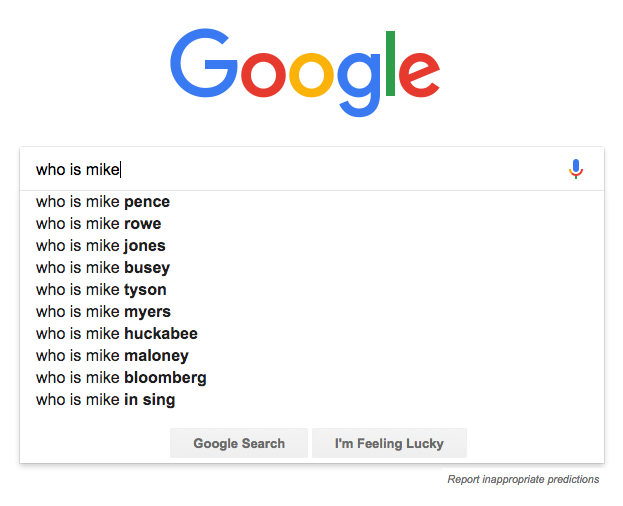Who is Mike Jones? Petey Pablo with better branding, basically.
In many ways, the very concept of “marketing” is antithetical to the artistic purity some musical acts hold dear.
Mike Jones was not the first, but maybe the most egregious example of a rapper turning that ethos on its head, using content to not only market, but deeply, incessantly, sometimes even maddeningly, ingrain his name in your brain. More on him later.
History hopping
When Grandmaster Flash and the Furious Five released “The Message” as an indie-label single in July of 1982, hip-hop may have been but a blip on the radar of mainstream consciousness, but its purveyors were already carving out a niche as marketing savants. That track is often singularly credited with helping bring rap music to the masses, though it was actually just an early chapter in the genre’s evolution from fringe social commentators to master content blasters.
Flash forward 30-plus years and hip hop’s influence has quite arguably reached the point of oversaturation, with outlets such as Sirius XM featuring some three-dozen varieties of rap alternative stations divided by decade and subgenre.
Yet that level of pop permeation shouldn’t detract from the fact that perhaps no art form, musical or otherwise, has anticipated and experimented with content types and aligned marketing tactics as frequently, proactively or daringly as that which we define culturally as “rap.”

Whether your level of acumen is limited to the Will Smiths and Vanilla Ices of the world or you fancy yourself an MF Doom-inspired hip-hop laureate, there are constant lessons to be consumed from the ways these artists have utilized their platforms, crafted content and accompanied their music, all in the interest of creating a larger, cohesive story and furthering their own brand – or as in the case of The Five, of course, their message.
All marketers, whether exclusively B2B in scope or broadening their focus to consider the consumer behind their immediate partner, can heed these rap-taught takeaways.
Even if your brand is a bit more buttoned up – eschewing the boldness and bombast of, say, a Busta Rhymes, for a more refined tone – there are still certainly notes to be jotted from the many who missed the mark, as well as those have so memorably captivated their audience.
Like the rap game, the content marketing sphere has itself become more saturated, and thus more discerning.
As Contently’s 2017 preview duly noted, the demand for a data-optimized approach means every content endeavor is delicate, and an attempt to be edgy, hip or atop the pulse of a given subject or industry should never come at the cost of your carefully cultivated brand, upon which your credibility is contingent.
Lesson 1: Tap into the medium of the moment without losing sight of the campaign
Lesson one is all about method and execution.
Audience consumption preferences should always be among the primary factors dictating your content type (i.e., do your targets attend conferences and consume more traditional collateral, or are they likely scrolling social media for shareable, bite-size bits?).
In its adolescence (the 1990s), hip-hop was still generally deemed a bit too hardscrabble for mainstream media, thanks to its often subversive lyrics and the perceived threat posed by the likes of NWA or Naughty By Nature. So, seizing on the success seen by the likes of ‘80s icons such as Madonna or Peter Gabriel, it sunk its teeth into music videos and never released its hold. Among Billboard’s top 10 videos of the decade, three rap acts – Eminem, Missy Elliott and TLC – can trace their commercial emergence in direct parallel with the MTV weekly music video countdown crest.
Artists ranging from the highly regarded – Tupac Shakur, Dr. Dre, Puff Daddy – to the fleeting (what up Petey Pablo) adopted the video vehicle at a time when a new audience (read: white and/or suburban) was still familiarizing itself with the subject matter. The timing for using this lens couldn’t have been more perfect.
Some of the most elaborate, expensive and ultimately memorable pieces of music video content emerged from this era. And while you may not know who wrote it or where exactly that sample comes from, if you came of age during the ‘90s, the hook from “Mo’ Money Mo’ Problems” undoubtedly evokes the image of goggle-clad Diddy and Mase floating about in anti-gravity suits, swimming in greenbacks.
Similarly, for the indoctrinated, the phrase “North Carolinaaaaa, throw ya hands up” most definitely prompts you to “take ya shirt off and spin it around yo’ head just like a helicopter,” because Petey took you to Tobacco Road, placed us right there in that moment in time.
Eminem went a step further, introducing his Slim Shady persona via videos that were part parody, part concept art. The musical component was almost an afterthought, to the extent that it took years for him to receive due credit for his lyrical skills.
The most successful of these artists were utilizing video while it was ripe for exploitation but never relying solely on it.
The most successful of these artists were utilizing video while it was ripe for exploitation but never relying solely on it.
Slim Shady, as it turned out, had a darker yet introspective side revealed throughout the proceeding LPs, one that resonated with a previously untapped angsty audience. Eminem’s bubble-gum videos may have seemed shortsighted, but the tongue-in-cheek subtleties and visual humor they allowed him to employ all tied into the broader vision: to take the music industry by storm, with an army of disenfranchised, dyed-blonde-haired, white-tee-clad youth at his back.
Takeaway: That method can be applied directly by marketing teams today, whether you’re a local bank using testimonials to extol superior customer service or a manufacturer live-tweeting from a trade show. Never lose sight of your audience, and employ the medium through which they will most efficiently and consistently receive your message. That medium may vary, but the crux of that message should not.
Lesson 2: You can produce content en masse, but you run the risk of diluting its effect
It’s an almost universally understood truth that, in the post-Penguin 3.0 world, search queries no longer reward keyword stuffing or content for content’s sake. SEO and thought leadership are not mutually exclusive, and so a well-conceived blog post or eBook, not unlike a carefully crafted album, is worth the time it takes to perfect. It can also, through the proper channels, be repurposed and revisited in the interest of being better received.
SEO and thought leadership are not mutually exclusive, and so a well-conceived blog post or eBook, not unlike a carefully crafted album, is worth the time it takes to perfect.
It’s a lesson the likes of Nas, or perhaps the Wu-Tang Clan, may have appreciated learning in the pre-social media era.
Remaining on the pulse of current events and trends is necessary to an extent for the sake of credibility but shouldn’t be the sole strategy. Inevitably, redundant content – that stale take on the most recent cybersecurity breach, or the umpteenth mixtape compilation (Lost Tapes, anyone?) – will get lost in the shuffle.
Shifts in consumption can still lend themselves to capitalizing on a moment, but the maneuver has to be approached delicately. Kanye had a kid, so he wrote “Only One” with Paul McCartney and released it via iPhone video.
The public promptly drooled.
Macklemore captured the mood of a particular post-election segment of the population with the November 2016 release of “Wednesday Morning.” The song was introduced to the public by way of The Ellen Degeneres Show and an accompanying Instagram post, highlighting the Seattle rapper’s sense for the moment and the content preferences of his base, while smashing any lingering perception that he was simply the “Thrift Shop” novelty act. The single, buoyed by savvy social leveraging, required no further album elaboration.
The takeaway: News-oriented or topical items can still be effective but generally only in moderation and when leveraged appropriately.
News-oriented or topical items can still be effective but generally only in moderation and when leveraged appropriately.
Similarly, pounding brand recognition into your audience’s eardrums (or eyeballs) will only get you so far. This is where our boy Mike Jones comes back into play.
An otherwise average rapper from Houston with a decidedly mundane name, Jones rode the Swisha House wave of the mid-2000s out of anonymity, then amplified his notoriety by crafting simplistic catchphrases and flipping his everyman pedigree – “Now I’m hot, they all on me” – into a selling point.
In a matter of months, every college frat boy was asking his roommate rhetorically, “Who?”
And more than a decade later, a search query of that eponymous album title still autofills right behind that of the current vice president.

Problem was, like a standstill jump shooter, Mike Jones never had a second move, so he faded back into oblivion the same way your company’s message might if you’re continually plugging the same product, or never varying the calls to action in your blogs.
In other words, brand recognition is an important piece, but it has to be buttressed by deeper industry knowledge, expertise and vision.
Lesson 3: You can reinvent yourself, but you might alienate segments of your audience
Big brands know this stay-in-your-lane lesson well, but it’s worth reiterating.
Customer loyalty can be fragile, as Starbuck’s “Race Together” campaign or Radio Shack’s efforts to rebrand itself as the more, uh, transient-sounding “The Shack” affirmed. Consumers, especially, can be self-conscious, and few things drive them away like the fear of being labeled unwoke.
For more cautionary tales, look no further than hip-hop’s fan base, which by the way, considers itself more woke than you.
Outkast, one of the most broadly acclaimed and battle-tested duos of the ‘90s, needed nearly a decade of nostalgia-fueled recovery time to regain its cache following the polarizing Speakerboxx/Love Below double album of 2003. Specifically, Andre 3000’s Love Below work, while met with praise for its bold experimentation by many music critics, cost him legions of fans who didn’t want to hear him show-tune or muse on alien life forms but rather stick to spittin’, Bombs Over Baghdad-style.
Consumers, especially, can be self-conscious, and few things drive them away like the fear of being labeled unwoke.
In a more egregious keepin’-it-real faux pas, Chicago rapper Common, once an underground champion who actually helped bring a previously unknown Kanye into the major-label fold, fell out of favor with many of his true-rap fans by donning sweaters for Gap ads and teaming up with Queen Latifah to make sappy romantic comedies.
The irony, in each case, was that both Andre and Common were maturing, evolving as artists and branching out through new endeavors and avenues, hoping to endear their old fans while seeming more approachable and enlightened for the new.
The rationale is understandable: Delivering the same message can feel redundant.
The key is to find new methods for massaging that message, threading the needle between reinvention and reliability.
The key is to find new methods for massaging that message, threading the needle between reinvention and reliability.
You’ve got podcasts and testimonials on your site now? That’s cool, but your loyal subscribers are still mostly concerned with whether they’ll receive their expected services on time and at a consistently high quality.
So, yeah, incorporate some autotune and even a Bieber sample if you must, but make sure you don’t abandon the simple-yet-effective DJ Premier beats that got you those leads in the first place.





